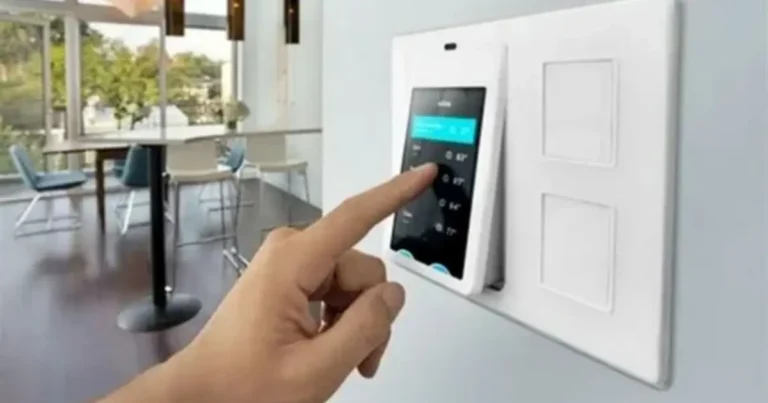Smart sensors with motion detection improve home security by detecting movement and triggering alerts or alarms. These sensors are beneficial for protecting a house by observing activities within it and instantly sending the notification to the residing phone. They help strengthen a home’s security and deterrence and make it very easy for the property owner to secure their place effortlessly with smart sensors with motion detection.
You have a certain peace of mind regarding the security of your home when out of it. Smart motion detector sensors really help boost the security of the house, which detects movements and, in turn, alerts the householder via the phone. These sensors not only physically inhibit intrusion but also automate lighting and enhance general safety—all with the comfort of having a smarter, safer home.
Stay tuned to learn more about how smart sensors with motion detection improve home security. Find the latest innovations, expert advice, and the best equipment, such as smart sensors, to keep your home secure. Smart sensors mean peace of mind and a smarter, more secure home. Read on for more.
What Are Smart Sensors?
Smart sensors are sophisticated devices that detect movement and set off an action when that movement is spotted. These devices work within a home automation system such that the devices can be lights, security alarms, and other smart devices automated within the home. Thus, if smart sensors detect motion, there is automatic home automation and better security.
Understanding Smart Sensors with Motion Detection
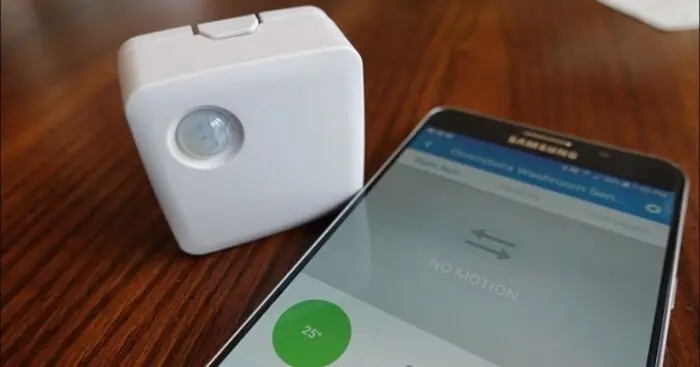
Smart sensors are electronic copies of house movement detectors that can detect movements within a specific area. They can have different utilized techniques such as infrared, ultrasonic, or microwave, depending on which they are triggered to signal an alarm. They are popular in security systems, in building electric lighting automation, or even use energy savings.
How Do Smart Sensors Work?
Smart sensors detect movement by measuring differences in heat, sound waves, or electromagnetic signals. When such movements are detected, alerts are sent to the connected security system or smartphone app to keep homeowners informed at all times.
Benefits of Smart Sensors with Motion Detection
1. Instant Alerts and Notifications
Real-time alerts are one of the major benefits of motion detection smart sensors. Be it the mobile app or the connected alarm system, these sensors instantly notify homeowners about potential threats.
2. Enhanced Home Security
Installing motion detector smart sensors into your home security system will deter intruders from attempting to break in. Some of these sensors even link with cameras that will start recording as soon as motion is detected.
3. Energy Efficiency
Energy conservation by smart sensors in lighting and appliance control applications is an example. When illumination is made to turn off in case the room is empty, this reduces power consumption.
4. Integration with Smart Home Devices
Most motion-detecting smart sensors are open to integration with other smart home devices like cameras, alarms, and smart locks. This seamless integration enhances overall security and convenience.
Best Smart Motion Sensors for Home Security
1. Ring Motion Sensor

Works seamlessly with Ring Alarm and other smart home devices, offering customizable motion detection settings and instant alerts.
2. Wyze Motion Sensor
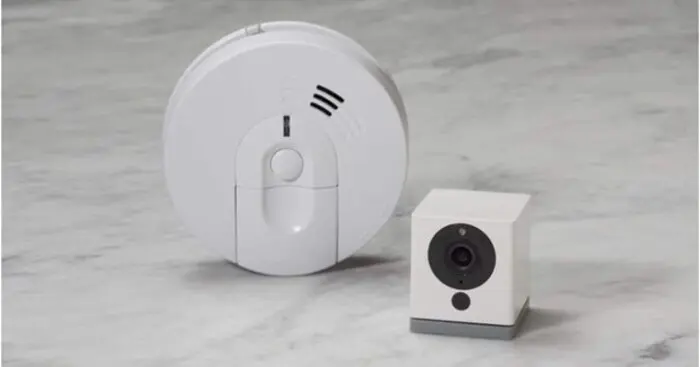
Affordable yet efficient, the Wyze Motion Sensor connects with Wyze cameras and sends prompt alerts upon motion detection.
3. Ecolink Z-Wave Plus Motion Sensor
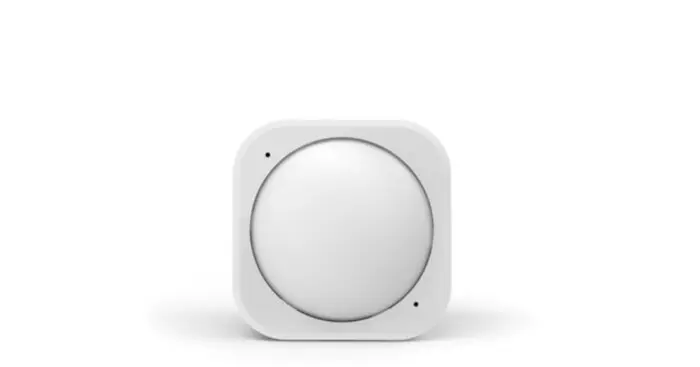
Compatible with Z-Wave hubs, this sensor offers long battery life and pet-immune motion detection.
4. Arlo Smart Motion Sensor

Designed for outdoor use, integrates with Arlo security cameras and smart motion detection with minimum false alarms.
5. Philips Hue Motion Sensor
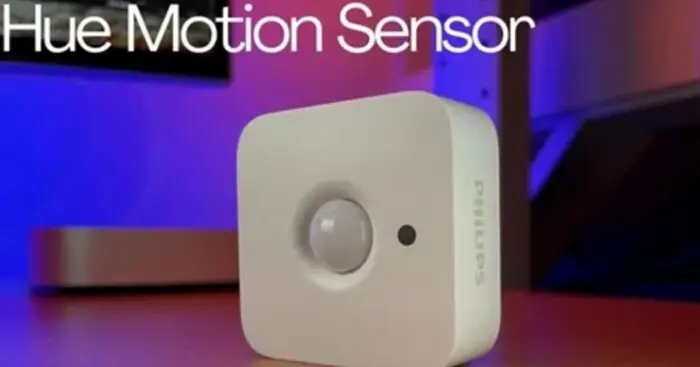
This motion sensor does double duty for energy-saving security by automating lights on only when needed.
Types of Smart Sensors with Motion Detection
1. Passive Infrared (PIR) Sensors
Movement detection is made along with temperature change through passive infrared sensing. As a result, this sensor type is often integrated within security alarms and utilized within automatic lighting systems.
2. Microwave Sensors
Emitters of microwave pulses measure their reflections in detecting moving presence. These greatly sensitive sensors can also work well on walls.
3. Ultrasonic Sensors
Ultrasonic sensors utilize sound waves to some extent to detect movements. Automatic doors and automated lighting systems are the most common uses of ultrasonic sensors.
4. Dual-Technology Sensors
These combine two detection methods, PIR and microwave, to reduce false alarms and enhance accuracy.
How Smart Sensors with Motion Detection Improve Home Security
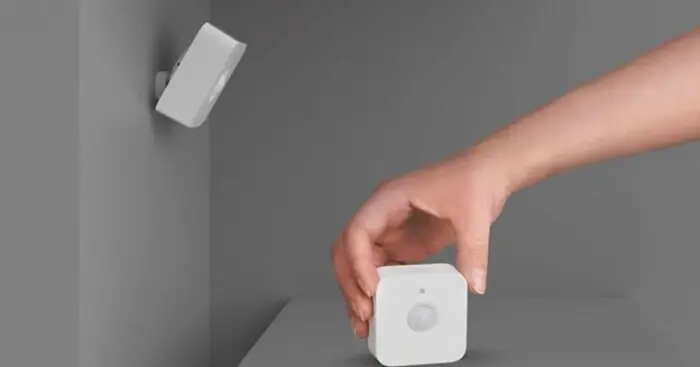
1. Preventing Unauthorized Entry
Such smart sensors prevent unauthorized entry, as these devices can trigger alarms, notify concerned persons, and activate security cameras when they sense motion.
2. 24/7 Monitoring and Protection
Smart sensors provide continuous monitoring like any other sensor with motion detection; thus, they add security 24 hours a day, at home or anywhere. It notifies of abnormal behaviour at such times.
3. Smart Automation for Security Systems
Automated activity by the smart sensors, along with effective motion detection, is made by integration with other security devices, whereby suspicious or strange activities wake the light, lock the doors, or trigger the alarms.
Choosing the Right Smart Sensors with Motion Detection
1. Coverage Area and Sensitivity
Consider the coverage area and sensitivity of the sensor. Some sensors are ideal for small rooms, while others can monitor large outdoor spaces.
2. Compatibility with Security Systems
Ensure the sensor is compatible with your security system or smart home hub. Many brands offer integration with Alexa, Google Assistant, and Apple HomeKit.
3. Battery Life and Power Source
Choose sensors with long battery life or those that can be hardwired for continuous power.
4. Weather Resistance
Sensors meant to be used outdoors should be weatherproof, and they should be designed to withstand the extreme temperature and humidity levels encountered in the outdoors.
Installation and Maintenance of Smart Sensors with Motion Detection
1. Proper Placement
Fix them at primary points like doors, hallways, and high-risk areas like garages or basements of your residence for maximum security provided by these smart sensors with motion detection. Make sure that their coverage is at an angle that allows as much area as possible to direct sunshine or moving objects like curtains to avoid triggering false alarms.
2. Regular Testing and Maintenance
To keep smart sensors with motion detection working effectively, regular tests should be performed by walking in their detection range and checking response times. Keeping the sensors clean will avoid interference due to any particles of dust or dirt that may hinder their function. The sensors should also be regularly checked for software updates released by the manufacturers to improve their efficiency and security.
3. Connecting to Smart Home Systems
Connect these smart sensors having motion detection with your smart home hub, security cameras, and alarms, making this entire smart home system work and with the least effort required setting in getting them to work automatically receive real-time alerts, thus providing control over home security via smartphone app making easy leveraging the home service as well as increasing the efficiency of the system.
FAQs
1. Which sensor is used for motion detection?
Smart sensors capable of detecting motion use passive IR, microwave, and ultrasonic sensors to detect motion and enhance home security.
2. What is the use of motion sensors in smart homes?
Smart sensors capable of motion detection play a role in automating lighting, ringing security alarms, and sending alerts on any unexpected movement.
3. What sensors are used in home automation?
A perfect integration of motion detectors, temperature, door/window, and humidity smart sensors fits with home automation.
4. How does smart home automation work?
In smart home automation, devices are connected via Wi-Fi or Bluetooth, and smart sensors with motion detection can trigger action based on their detecting movement.
5. What are the three types of motion sensors?
These three can be classified as PIR, microwave motion sensors, or dual-tech smart sensors for motion detection; hence, both can be combined for more accuracy.
Conclusion
Smart sensors with motion detection play an essential role in improving home security. These sensors immediately detect movement and alert the homeowner of any unusual activity. In coordination with security cameras and alarms, they prevent break-ins, rendering the property safe. Smart sensors with motion detection accomplish real-time monitoring, so you are informed even during your absence. They can distinguish between humans, pets, and objects, reducing false alarms and thus making home security very reliable.
Acquiring smart sensors with motion detection is a form of investment in extra comfort and peace of mind. These sensors can be strategically mounted indoors and outdoors to brighten the environment and alert the residents. More importantly, with the rapid technological growth of artificial intelligence, it is becoming ever more accurate and effective, a definite enhancement in any modern home security system. In addition, installing sensors in your home guarantees its safety and more innovative security management.

